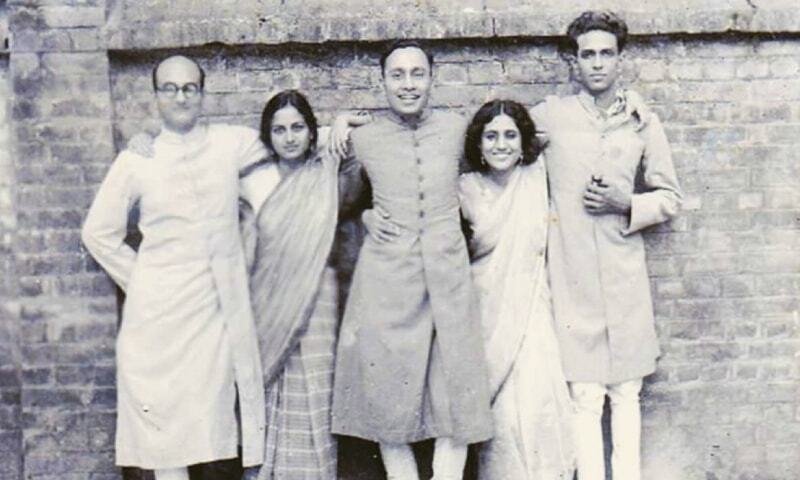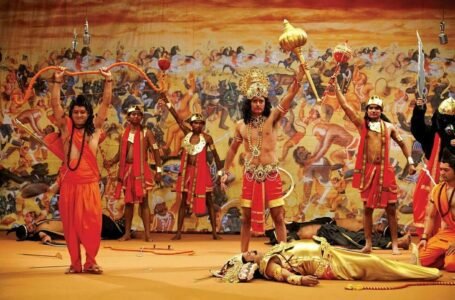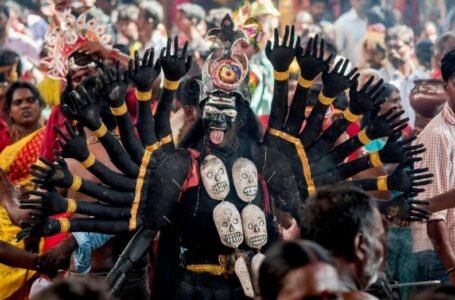Pen as Sword: Progressive Writers’ Movement and Its Historical Impact

During periods of political turmoil, literature becomes a weapon of protest. Nowhere is this clearer than in the Progressive Writers’ Movement (PWM) of India, a literary movement that started in the 1930s. Spurred by Marxist philosophy, anti-imperialist sentiment, and the international socialist tide sweeping over the world, the PWM brought together writers of poetry, fiction, drama, and essays united in a single cause of protest. Theirs was not a goal simply to compose beautiful writing, but to transform society using the power of the written word. In an era when British colonialism tightened its noose and social injustice was rampant, these authors held high the banner, their pens being swords in a crusade for justice, equality, and national awakening.
The origins of the movement lie in 1935, when Indian students and intellectuals studying in London—particularly Sajjad Zaheer, Mulk Raj Anand, and Mohammad Din Taseer—prepared a manifesto of their ideas for a progressive literary movement. This was to stress that literature had to represent the truth of society and resist exploitation, feudalism, and imperialism. The inaugural formal meeting of the Progressive Writers’ Association (PWA) was held in Lucknow in 1936 with Munshi Premchand, a highly revered literary voice of the era, as its president. His speech during the conference articulated the necessity for literature that addresses the people and not the classes in beautiful terms. And thus started a powerful movement of socially conscious literature that swept across linguistic and regional borders of India.
Ideologically, the movement was heavily Marxist and Soviet socialist realist in influence, albeit modified for the Indian experience. The PWA perceived literature as revolutionary transformation. It discarded the escapism and aestheticism of the previously prevalent romantic and idealist schools. Progressive writers employed a realist approach instead, lighting up the lives of peasants, workers, women, and suppressed castes. They wrote not to entertain but to stir people to action. The literary production of this epoch was characterized by a raw, unvarnished confrontation of poverty, injustice, religious orthodoxy, and political tyranny. These works served as both a mirror held to society and a hammer with which to mould society.
One of the hallmarks of the movement was its linguistic variety. Though it began making waves first in Urdu, the PWM later spread its influence to Hindi, Bengali, Punjabi, Tamil, Malayalam, and other Indian languages. In every region, authors translated the fundamental progressive ideology into the local terms. In Urdu literature, names such as Faiz Ahmed Faiz, Ismat Chughtai, Saadat Hasan Manto, and Kaifi Azmi became identified with forceful, evocative writing. In Hindi, the writings of Phanishwar Nath Renu, Nagarjun, and Yashpal propagated the banner of progressivism. Bengali literature witnessed the emergence of authors such as Manik Bandopadhyay and Mahasweta Devi, who addressed class, gender, and political oppression with unflinching honesty.
The Progressive Writers’ Movement was not just a literary movement; it was deeply entangled with the broader political trends of the day. The movement identified with India’s freedom struggle, helped labor unions, stood with the oppressed, and opposed communalism. Most progressive writers were also political activists and some even suffered imprisonment for what they believed in. Their work usually had cryptic, and sometimes explicit, criticisms of British imperialism, capitalist exploitation, and religious bigotry. In the years preceding freedom, the PWM brought revolutionary fervor to the cultural scene, reducing literature to a willing observer of the national struggle.
Faiz Ahmed Faiz, the most renowned of the movement’s voices, is a prime example of this blending of poetry and politics. His poems—lyric and inflammatory—sang of love and resistance, exile and revolution. Slogans such as “Bol ke lab azaad hain tere” (“Speak, for your lips are free”) became freedom and defiance icons. Feminist awareness was introduced by Ismat Chughtai, another pioneer, into the mix, breaking the middle-class Muslim patriarchal norms of the home in works such as “Lihaaf” (“The Quilt”). While Manto crossed the boundaries of acceptable narrative by exploring the psychological wounds of Partition and society’s hypocrisies, regularly being banned and charged with obscenity for his uncompromising stories.
The movement’s impact was profound. It culturally democratized literature by giving center stage to the lives and voices of the downtrodden. Earlier, a large part of Indian literature had been based on upper-caste, upper-class sensibilities. The radical writers broke this hegemony, opening up the stage for peasants, prostitutes, factory workers, Dalits, and women to become the centerpiece. Their writings forced readers to look uncomfortable realities in the eye and question the moral compass of society. By doing so, the PWM revolutionized literature and even changed the very definition of who and what is worthy of literary consideration.
Politically, the PWM radicalized a generation of Indian intellectuals. Its intimate relationship with the Communist Party of India (CPI) also meant that its members engaged in grassroots organizing, trade unionism, and political activism. Literature became mobilization and agitation. But it also created conflict and splits in the movement. As India transitioned into post-independence times, the PWA experienced internal splits, ideological dogmatism, and state repression. The emergence of the Cold War, prohibition of the CPI, and the evolving character of Indian politics contributed to a decline in the impact of the movement. The essence of progressivism, however, kept evolving in new forms.
The years after 1947 saw a disintegration of the movement. Some authors grew disenchanted with the state of Indian socialism and looked for new literary avenues. Others maintained a progressive ethos in their writing but broke from the CPI. One of the criticisms made about the PWM was that it was at times too focused on ideology and not enough on artistic merit, resulting in formulaic works. Nevertheless, the central legacy of the movement persisted—its commitment to applying literature to challenge power, speak for the silenced, and dream of a fairer world remained a beacon to guide future generations.
The legacy of the Progressive Writers’ Movement can be seen in modern literature, film, and social activism. Most of its concerns—such as discrimination on the basis of caste, gender injustice, workers’ rights, and communal riots—continue to be pertinent today. Modern authors such as Arundhati Roy, Meena Kandasamy, and Dalit writers such as Omprakash Valmiki and Bama continue the tradition of literary resistance. In film, the heritage is seen in directors such as Shyam Benegal and Saeed Akhtar Mirza, who blended storytelling with social commentary. Even popular culture bears traces of progressive thought in protest poetry, street theater, and spoken word movements.
Additionally, the PWM provided the groundwork for an exclusive model of cultural activism in India—one that is not literary but socially situated. It remapped the function of the writer from being a mere observer to a proactive force for shaping society. In an era when authoritarianism and censorship are making a comeback in many regions of the world, the lesson of the progressive writers is more relevant than ever. Their audacity to speak truth to power and their absolute faith in the redemptive power of art provide lessons that are relevant for writers, artists, and intellectuals today.
The Progressive Writers’ Movement not only transformed literature but redefined the writer’s role as a voice of conscience. It made literature a space of resistance—where the struggles of workers, women, and marginalized communities were brought to the forefront. Instead of detached storytelling, writers engaged directly with the social and political crises of their time. This bold move challenged both colonial powers and internal hierarchies of caste, class, and gender.
What made the movement powerful was its reach—it crossed regional and linguistic borders, creating a collective voice rooted in justice. Urdu, Hindi, Bengali, Tamil, and Malayalam writers echoed the same cry: that literature must belong to the people and fight for their rights. Whether in Faiz’s revolutionary verses or Chughtai’s fearless feminism, the commitment to truth was unwavering.
Though political shifts and internal divisions eventually weakened the movement, its spirit lives on. Today, socially conscious writing, Dalit literature, feminist voices, and protest art continue to reflect the PWM’s influence. In a world where free speech is again under threat, the movement’s message is more relevant than ever: that the pen must never be silent in the face of injustice.
One cannot write about the PWM without recognizing its challenges and contradictions. The movement was largely male-controlled, and although it did have some pioneering women such as Chughtai and Rashid Jahan, gender balance within the ranks was still an issue. Moreover, although it spoke in the name of the masses, the movement was frequently led by urban, educated elites. These constraints notwithstanding, the movement’s importance in terms of history is not diminished. Instead, they serve as a reminder that progressive ideals need to constantly be rethought and broadened to encompass more inclusively diverse voices and visions.
In summary, the Progressive Writers’ Movement was not only a literary episode in Indian history but a cultural revolt that attempted to redefine the very raison d’être of art. It demonstrated that literature could be a weapon—a tool to resist, to oppose, and to envision a better world. The pen, under the hands of progressive writers, grew sharper than any sword and sliced through the layers of oppression and complacency. Theirs is not a legacy limited to the pages of history but exists in every action of creative defiance, in every protest poem, and in every story that has the courage to tell the truth. So long as there is injustice, the Progressive Writers’ Movement’s spirit will keep motivating new generations to grab the pen—not to write, but to struggle.


